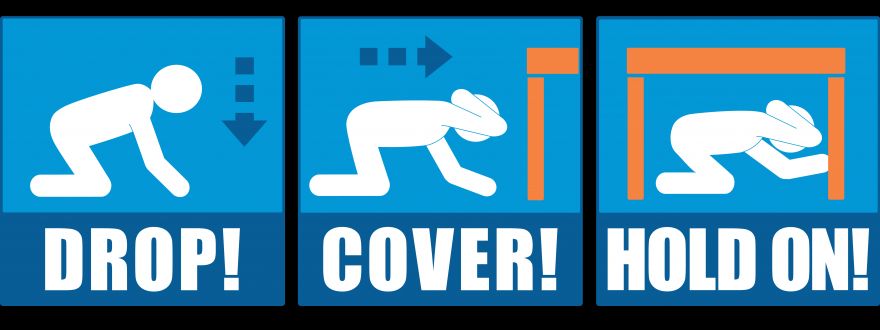
With a recent Bay Area earthquake measuring in at a magnitude of 4.5 and the 30 year anniversary of the 1989 Loma Prieta quake, we've got earthquakes on the mind. It can be hard not to let the paranonia of natural disasters weigh on you, but that anxiety is a natural reaction to your need to feel prepared.
Today, October 17th, was also the Great Shakeout event put on by California Earthquake Authority. We took some time out of our morning to participate in this world-wide event. According to the CEA, there were 10,808,765 participants this year! Kudos to all of you staying earthquake aware out there! We all learned a lot by going through CEA's reading material as a group and debriefing after our 30 second earthquake drill. Some of our favorite tips from today's readings described in detail how to protect yourself in different situations. Stay tuned for our journey as we become more earthquake prepared in our office! Our disaster kit is outdated and our emergency response master plan needs revision.
Just because you missed the Great Earthquake Shakeout this time around, it's never too late to run an earthquake drill with your family, classroom, or business! This simulation video can guide you through the actual drill, while this abundance of resources from CEA can help you prepare, debrief, and learn. You can also assess your risk of earthquake by County here (this resource is both frightening and informative).
Situational Responses to Earthquakes:
• Indoors: Drop, Cover, and Hold On. Avoid exterior walls, windows, hanging objects, mirrors, tall furniture, large appliances, and kitchen cabinets with heavy objects or glass. However, do not try to move more than 5-7 feet before getting on the ground. Do not go outside during shaking! The area near the exterior walls of a building is the most dangerous place to be. Windows, facades and architectural details are often the first parts of the building to break away. If seated and unable to drop to the floor: bend forward, Cover your head with your arms, and Hold On to your neck with both hands.
• In bed: Do not get out of bed. Lie face down to protect vital organs, and Cover your head and neck with a pillow, keeping your arms as close to your head as possible, while you Hold On to your head and neck with both hands until shaking stops. You are less likely to be injured by fallen and broken objects by staying where you are.
• In a high-rise: Drop, Cover, and Hold On. Avoid windows and other hazards. Do not use elevators. Do not be surprised if sprinkler systems or fire alarms activate.
• In a classroom: Drop, Cover, and Hold On. Laboratories or other settings may require special considerations to ensure safety. Students should also be taught what to do at home or other locations.
• In a store: Drop, Cover, and Hold On. Getting next to a shopping cart, beneath clothing racks, or within the first level of warehouse racks may provide extra protection. For more details, download a simple PDF fact sheet about Earthquake Safety in Stores.
• Outdoors: Move to a clear area if you can safely do so; avoid power lines, trees, signs, buildings, vehicles, and other hazards. Then Drop, Cover, and Hold On. This protects you from any objects that may be thrown from the side, even if nothing is directly above you.
• Driving: Pull over to the side of the road, stop, and set the parking brake. Avoid overpasses, bridges, power lines, signs and other hazards. Stay inside the vehicle until the shaking stops, then proceed carefully by avoiding fallen debris, cracked or shifted pavement, and emergency vehicles. If a power line falls on the car, stay inside until a trained person removes the wire.
• In a stadium or theater: Drop to the ground in front of your seat or lean over as much as possible, then Cover your head with your arms (as best as possible), and Hold On to your neck with both hands until shaking stops. Then walk out slowly, watching for anything that could fall during aftershocks.
• Near the shore: Follow instructions above for your particular location. Then as soon as shaking reduces such that you are able to stand, walk quickly to high ground or inland as a tsunami may arrive soon. Don’t wait for officials to issue a warning. Walk, rather than drive, to avoid traffic, debris, and other hazards.
• Below a dam: Follow instructions above for your particular location. Dams can fail during a major earthquake. Catastrophic failure is unlikely, but if you live downstream from a dam, you should know flood-zone information and have prepared an evacuation plan for getting to high ground.





